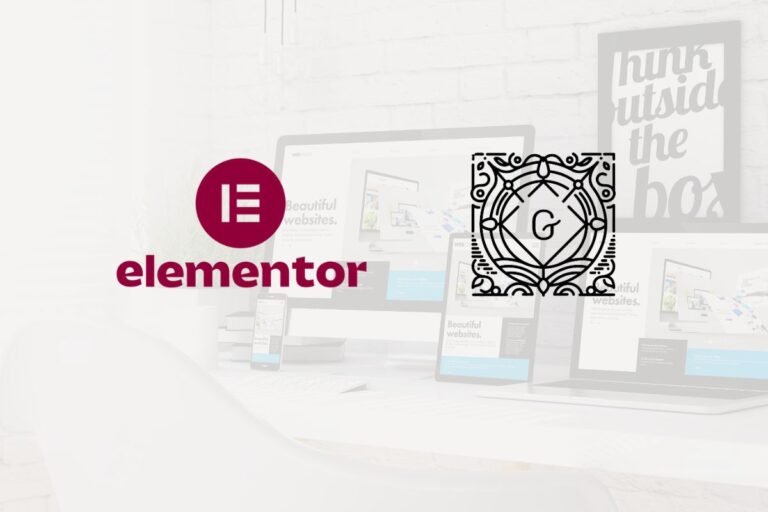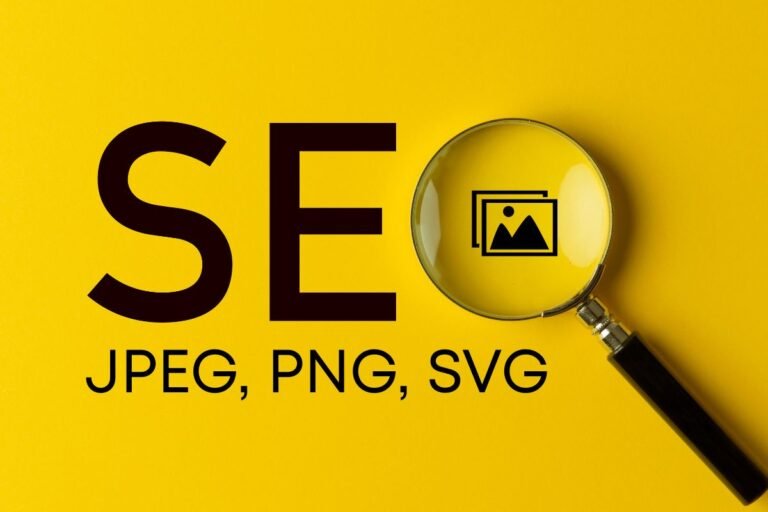If your WordPress site feels sluggish, your theme might be the quiet culprit. A lightweight WordPress theme can slash load times, boost Core Web Vitals, and create a smoother editing experience, without forcing you into a developer rabbit hole. In 2025, the best lightweight themes pair clean code with modern site-building tools, so you can ship fast, attractive pages that convert. In this guide, you’ll learn why theme weight matters, how we evaluate performance, and which themes actually deliver speed in the real world. We’ll break down pros and cons, ideal use cases, and a practical setup checklist to help you hit green Lighthouse scores and pass Core Web Vitals.
Why Theme Weight Matters For Performance
Theme weight is the total footprint your theme adds, PHP, CSS, JS, templates, and default assets. Heavier themes ship more code, which means more bytes to download, more render-blocking requests, and more CPU time spent executing JavaScript. On slower devices (or throttled mobile networks), that added complexity directly hurts metrics like Largest Contentful Paint (LCP), Interaction to Next Paint (INP), and Cumulative Layout Shift (CLS).
Here’s how a lightweight theme helps:
- Faster First Byte to First Paint: Less CSS and JS means the browser can start rendering sooner.
- Better LCP: Minimal default styling keeps the critical path lean so your hero image and headline render quickly.
- Improved INP: Fewer scripts reduce main-thread blocking, so interactions feel snappy.
- Stability for CLS: Clean, consistent spacing and minimal third-party widgets keep content from jumping.
And because themes sit under everything, your page builder, your plugins, starting with a smaller base gives you more budget for design flourishes, analytics, or ecommerce scripts without tipping your site over performance limits.
How We Evaluated Lightweight Themes (Criteria And Test Setup)
To keep this practical, we weighed both lab data (synthetic tests) and field-relevant behavior.
Evaluation criteria:
- Core Web Vitals readiness: How easy is it to pass LCP, CLS, and INP on mobile without heavy tweaking?
- File weight and requests: Size of theme CSS/JS and default HTTP requests on a fresh homepage.
- Code quality: Use of modern CSS, modular JS, and block editor compatibility without legacy bloat.
- Builder flexibility: Works cleanly with Gutenberg (block editor) and plays nice with popular page builders.
- WooCommerce optimization: Templates that don’t sink performance: cart/checkout friendliness.
- DX (developer experience): Hooks, filters, child theme support, documentation, and starter templates.
- Update cadence and support: Active development, transparent changelogs, and responsive support channels.
Test setup (realistic baseline):
- Fresh WordPress 6.6+ install on PHP 8.2, HTTP/2.
- Same mid-tier hosting (NVMe SSD, server-side caching enabled) to avoid host bias.
- Default theme demo page using theme’s native header/footer and a simple hero section.
- No page builder unless the theme requires one (e.g., Hello with Elementor).
- Measured with Lighthouse (mobile), WebPageTest, and Chrome DevTools for request/coverage insights.
Important note: Exact numbers vary by host, CDN, and your content. We focus on relative efficiency, not one-off bragging rights.
Quick Recommendations By Use Case
If you just want the short list, start here:
- Fastest no-fuss start (block editor): GeneratePress or Blocksy
- Best for agencies and freelancers: Astra (huge template library, reliable support)
- Best balance of features and simplicity: Kadence
- Best for Elementor sites: Hello (paired with performance-minded Elementor setup) or Astra/Kadence with Elementor
- Best for WooCommerce performance: Astra or GeneratePress (with minimal add-ons)
- Best for bloggers and publishers: Neve (clean, flexible, and affordable) or GeneratePress
- Best default/base theme for accessibility and long-term support: Twenty Twenty-Four (block theme)
If you’re building a lot of different site types and want predictable speed with solid design options, you’ll be happy with Astra, GeneratePress, Blocksy, or Kadence.
The Best Lightweight WordPress Themes (Detailed Reviews)
GeneratePress
GeneratePress is the poster child for lightweight WordPress themes. The free version is already very lean: the premium module system lets you enable only what you need.
Pros:
- Extremely small footprint: minimal CSS and JS out of the box.
- Granular control via hooks and filters: great for developers.
- Stable with the block editor: compatible with major builders.
- Reliable support and documentation: predictable update cycle.
Cons:
- Design options are more restrained unless you add the premium modules.
- Starter site library is smaller than Astra or Kadence.
Best for: Performance-first builds, technical users, and WooCommerce stores where you want to keep scripts and templates tidy. If you’re migrating from a bloated multipurpose theme, GeneratePress often cuts load time without dramatic redesign.
Astra
Astra is one of the most popular lightweight themes, and for good reason: it balances performance, design flexibility, and a massive library of Starter Templates across page builders and Gutenberg.
Pros:
- Lightweight core with sensible defaults.
- Huge starter site library (Elementor, Beaver Builder, Gutenberg) for fast launches.
- Deep WooCommerce integration: grid controls, quick view, gallery options.
- Strong ecosystem: add-ons, documentation, and community.
Cons:
- The sheer number of options can feel overwhelming at first.
- Some of the best features live behind the Pro upgrade.
Best for: Agencies and freelancers who need repeatable builds, small businesses that want a polished site fast, and WooCommerce stores needing proven templates without heavy code.
Neve
Neve keeps things surprisingly light while offering modern, clean layouts. It’s built for speed and compatibility with Gutenberg and popular builders.
Pros:
- Minimal CSS/JS: fast on mobile devices.
- Straightforward Customizer controls: low learning curve.
- Good value pricing for Pro with useful extras.
Cons:
- Fewer advanced layout controls than Kadence or Blocksy.
- Starter site designs are solid but less distinctive than the biggest libraries.
Best for: Bloggers, startups, and service businesses that want a zippy site with clean aesthetics and minimal tinkering.
Blocksy
Blocksy is a modern, block-friendly theme that feels tailor-made for the current WordPress editor. It delivers visual polish without sacrificing speed.
Pros:
- Smart use of modern CSS and conditional assets: performance-friendly.
- Excellent header builder and design controls: strong dark mode options.
- Good WooCommerce templates with thoughtful UX details.
Cons:
- More features = more decisions: you’ll want to prune options.
- Some advanced controls require the Pro upgrade.
Best for: Designers who want attractive defaults and flexible headers/footers, plus site owners who plan to stick with the block editor and want theme-level control without a heavy page builder.
Kadence
Kadence has become a favorite because it blends a generous free version with powerful Pro options and a clean UI. It’s well-optimized and pairs nicely with the block editor.
Pros:
- Lightweight with conditional loading: fast even with design features enabled.
- Excellent header and layout controls: global design system.
- Solid starter templates and WooCommerce features.
Cons:
- Depth of options can be daunting for beginners.
- You’ll get the most from Pro, budget for it if you want advanced hooks and extras.
Best for: Businesses and creators who want a modern look, easy site-wide design controls, and room to scale without switching themes later.
Hello (For Elementor Users)
Hello is Elementor’s official bare-bones theme. It’s essentially a clean canvas with near-zero styling, meant to let Elementor handle the layout and design.
Pros:
- Extremely minimal: perfect foundation for Elementor with no theme interference.
- Very small CSS/JS footprint from the theme itself.
Cons:
- Your performance heavily depends on how you configure Elementor and its add-ons.
- No theme-level design features: you do everything in the builder.
Best for: Teams committed to Elementor who want total control. For speed, pair Hello with strict asset controls, selective widgets, and a performance plugin like Perfmatters or FlyingPress.
Twenty Twenty-Four (Default Block Theme)
Twenty Twenty-Four is a block theme designed to showcase the site editor and full-site editing (FSE). It’s accessible, well-maintained, and a great choice if you want to stay close to core WordPress.
Pros:
- Built for the block editor and FSE: minimal compatibility overhead.
- Accessible and well-documented: maintained by core contributors.
- Good baseline performance: predictable updates.
Cons:
- Fewer opinionated design features than third-party themes.
- Smaller starter pattern ecosystem compared to big theme libraries.
Best for: Content-focused sites, documentation, and any project where long-term stability and accessibility matter. If you’re invested in Gutenberg’s future, this is a safe, speedy base.
How To Choose The Right Lightweight Theme
Picking a theme is equal parts performance and practicality. Use this checklist:
- Editing workflow: Prefer Gutenberg? Pick Blocksy, Kadence, GeneratePress, or Twenty Twenty-Four. Heavy Elementor user? Consider Hello or Astra/Kadence with optimized widgets.
- Starter templates: Agencies benefit from Astra’s giant library: Kadence and Blocksy also offer strong packs.
- WooCommerce needs: Look for optimized product/archive templates, cart/checkout layout control, and minimal extra scripts.
- Design flexibility vs simplicity: GeneratePress is lean and systematic: Kadence/Blocksy are more design-forward out of the box.
- Support and ecosystem: Consider documentation quality, update cadence, and active communities.
- Budget: Free versions can take you far. But if you value time, Pro upgrades usually pay for themselves with better controls and premade templates.
Tip: Install two contenders on staging and build one or two key pages (home, product, blog post). Compare speed, editing experience, and how quickly you can hit your brand look.
Setup Checklist To Hit Core Web Vitals
Themes set the baseline. Your setup finishes the job. Work through this list:
- CDN and caching
- Use a reputable host with server caching (e.g., LiteSpeed, NGINX FastCGI) and add a CDN (Cloudflare, BunnyCDN). Consider Cloudflare APO for WordPress for global TTFB reductions.
- Performance plugins (choose one primary)
- FlyingPress, WP Rocket, LiteSpeed Cache, or Perfmatters are recommended tools. Configure HTML/CSS/JS minify, defer non-critical JS, delay third-party scripts, and preconnect to critical origins.
- Image optimization
- Serve WebP/AVIF where supported. Use lazy load below the fold, set explicit width/height, and compress. ShortPixel, Optimole, and Imagify are solid options.
- Fonts
- Stick to system fonts or self-hosted variable fonts. Preload only the critical weight/style. Limit to 1–2 families. Swap or optional font-display to avoid FOIT.
- Critical CSS and above-the-fold
- Generate critical CSS via your performance plugin or a build tool. Keep hero sections simple, large images and sliders are LCP killers.
- Third-party scripts
- Audit everything: chat widgets, pop-ups, A/B testing, heatmaps. Load after interaction where possible. Use tag managers sparingly and with consent mode.
- WooCommerce specifics
- Strip non-essential widgets on cart/checkout. Avoid heavy AJAX fragments when possible. Cache catalog pages and optimize search.
- Core Web Vitals guardrails
- LCP: Optimize hero media and server response.
- CLS: Reserve space for images/ads, avoid layout-shifting banners.
- INP: Reduce JS, limit DOM complexity, and don’t overload headers with mega-menus.
Run Lighthouse (mobile) and WebPageTest after each major change, fix regressions before they pile up.
Common Pitfalls That Slow Lightweight Themes
Lightweight themes can only carry you so far if the rest of your stack misbehaves. Watch out for:
- Excessive page builder addons: Every widget pack adds CSS/JS. Keep only what you use: disable modules you don’t need.
- Hero sliders and background videos: These wreck LCP on mobile. Prefer a single optimized image or CSS gradient.
- Too many Google Fonts: Two families max, limited weights. Self-host when possible.
- Unoptimized images and icons: Oversized hero images and heavy icon packs (full Font Awesome) will bloat pages. Use SVGs and subset icon sets.
- Chat, social feeds, and pop-ups: Defer them or trigger after interaction. Replace embedded social feeds with static previews.
- Analytics bloat: Use server-side tagging or a lightweight loader. Fire only the events you need.
- CSS-in-JS and global CSS collisions: If you mix multiple builders or block suites, you may duplicate styling. Prune overlapping plugins.
- Unused WooCommerce features: Disable reviews, zooms, or fragments you don’t use. Streamline checkout fields.
Pro move: Use Chrome’s Coverage tab to see unused CSS/JS. If more than ~70% of CSS is unused on a template, you’ve got pruning to do.
Conclusion
Choosing the best lightweight WordPress theme for speed is about finding a lean foundation that fits how you like to build. If you want maximum control and the smallest footprint, start with GeneratePress. If you need a vast template library and dependable WooCommerce options, Astra is hard to beat. Prefer a modern block-first experience? Blocksy and Kadence deliver polish without dragging performance down. Sticking close to core? Twenty Twenty-Four is a safe, speedy bet. And if you’re settled on Elementor, Hello is the clean slate to build on, just be strict with assets.
Next steps: spin up a staging site, test two favorites, and run Lighthouse on mobile. Then finish the job with a solid CDN, a caching/performance plugin, optimized images, and restrained third-party scripts.
Want to go further? Explore our recommended tools, best plugins for speed (caching, image optimization, script control), and top themes for specific niches like ecommerce and local services. With the right base and a disciplined setup, your site can pass Core Web Vitals and feel instantly fast to every visitor.
Key Takeaways
- Lightweight WordPress themes cut CSS/JS bloat, speeding up LCP, INP, and CLS so pages render sooner and feel snappier on mobile.
- We evaluated themes using Core Web Vitals readiness, file weight/requests, code quality, builder and WooCommerce compatibility, DX, and support on a consistent test setup.
- The best lightweight WordPress themes for speed include GeneratePress, Astra, Blocksy, Kadence, Neve, Hello (for Elementor), and Twenty Twenty-Four, each excelling for specific use cases.
- Choose a theme that fits your editor workflow and WooCommerce needs, then A/B test two favorites on staging and verify with Lighthouse before committing.
- Pair your theme with a CDN, smart caching/performance plugin, optimized images and fonts, critical CSS, and restrained third‑party scripts to reliably pass Core Web Vitals.
- Avoid common speed killers—excess builder add-ons, sliders/videos, too many fonts, heavy icon packs, chat/pop-ups, and CSS duplication—and prune using Chrome’s Coverage tool.
Frequently Asked Questions
What are the best lightweight WordPress themes for speed in 2025?
Top picks include GeneratePress, Astra, Blocksy, and Kadence for balanced speed and features. Neve suits bloggers and startups, Hello is ideal for Elementor users, and Twenty Twenty-Four is a safe, accessible block theme. Choose based on editor preference, templates, WooCommerce needs, and support ecosystem.
Why does theme weight impact Core Web Vitals and overall site speed?
Heavier themes ship more CSS/JS and requests, slowing rendering and blocking the main thread. Lightweight themes reduce critical path resources, improving LCP, INP, and CLS. Less code means faster first paint, snappier interactions, and more “performance budget” for images, analytics, or ecommerce scripts without tipping metrics.
How do you evaluate a lightweight theme’s speed realistically?
Use a consistent setup: WordPress 6.6+, PHP 8.2, same hosting with caching, and a simple demo page. Measure mobile performance with Lighthouse, WebPageTest, and DevTools. Assess file weight/requests, Core Web Vitals readiness, code quality, builder compatibility, WooCommerce templates, developer experience, and update cadence.
Which lightweight WordPress theme is best for WooCommerce performance?
Astra and GeneratePress are strong choices. They keep theme assets lean, offer optimized product/archive templates, and play well with caching. Pair with disciplined cart/checkout setups, minimal add-ons, and script control to reduce AJAX fragments. This combo delivers fast browsing and smoother checkout on mobile.
Are block themes faster than classic themes for the best lightweight WordPress themes for speed?
Not automatically. Block themes like Twenty Twenty-Four can be fast thanks to modern markup and fewer compatibility layers. But speed depends more on total CSS/JS, template efficiency, and plugins used. A well-optimized classic theme (e.g., GeneratePress) can outperform a bloated block setup with heavy blocks.
Is a premium theme faster than a free theme when optimizing for speed?
Speed isn’t about price; it’s about code efficiency and asset loading. Premium versions of lean themes often add conditional features and better controls that let you ship less CSS/JS overall. However, a well-built free theme can be just as fast if you avoid unnecessary modules and third-party add-ons.


